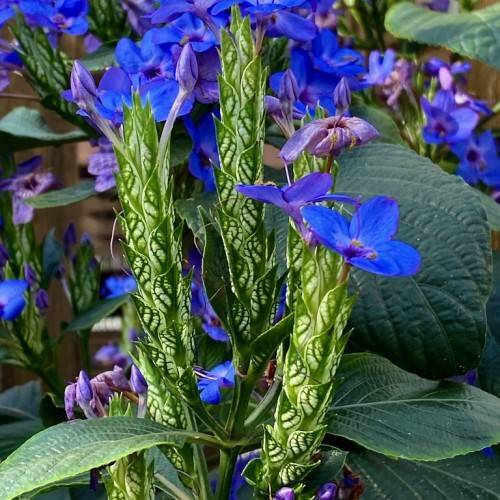
blue sage
Eranthemum pulchellum
Cycle:
Perennial
Watering:
Average
Hardiness Zone:
10 - 11
Flowers:
Flowers
Sun:
Full sun,part shade
Leaf:
Yes
Growth Rate:
Low
Maintenance:
Moderate
Drought Tolerant:
Yes
Salt Tolerant:
Yes
Care Level:
Moderate
watering
Blue Sage (Eranthemum pulchellum) should be watered 2-3 times a week. The soil should be moist but not saturated. Avoid soaking the soil completely and allow the top soil to dry out slightly before each watering. During the summer days, water more frequently. Adjust the amount of water based on the temperature, light levels, humidity, and soil water retention properties. In the winter periods reduce the frequency of watering and increase the depth of the water. Make sure the soil does not remain soggy for long periods of time to avoid root rot and other issues.
sunlight
Blue sage (Eranthemum pulchellum) thrives best in full sun exposure, with about 6-8 hours of direct sunlight per day. Blue sage should be planted in an area that receives full sun in the morning, and some shade or filtered light in the afternoon. Avoid planting it in an area that receives shade throughout the entire day. Make sure the soil drains well and is not waterlogged. During the peak of summer, the plant should be given a little extra protection from the intense afternoon sun, as this will help prevent leaf scorch and other damage.
pruning
Blue sage should be pruned in late winter or early spring, before new growth appears. This will help promote a bushier plant with more blooms. Start by removing any damaged or diseased branches, then deadhead the flowers after they've finished blooming. Next, remove a third of the oldest stems at the base of the plant to keep it healthy. You can also prune out any shoots that appear thin or spindly. Any pruning should be done lightly, as this plant does not tolerate heavy pruning.
